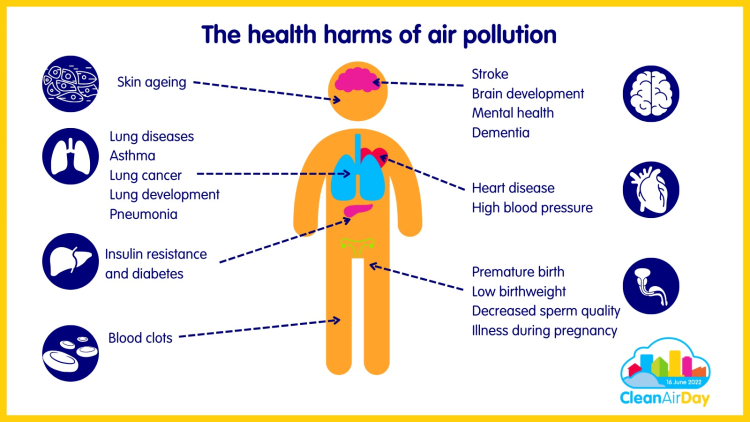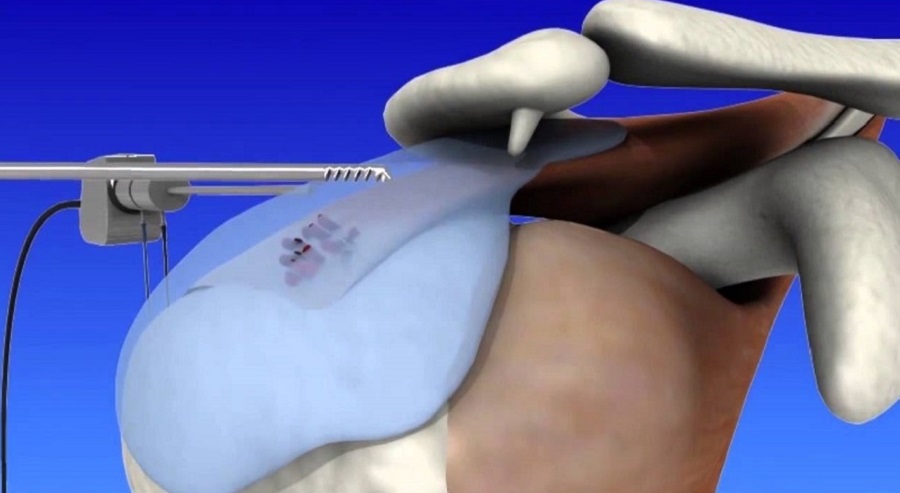Pollution poses significant health risks to individuals across the United States. From air and water pollution to soil contamination and hazardous waste, the impact of pollution on human health is far-reaching. This article explores the various types of pollution prevalent in the USA and the associated health risks. Understanding these risks is crucial for promoting environmental sustainability, public health, and the overall well-being of communities.
Air Pollution
Air pollution, primarily caused by emissions from vehicles, industrial activities, and power plants, is a major health concern in the USA. Children and older adults are particularly susceptible to the adverse effects of air pollution. In urban areas with high traffic density and industrial activities, communities living near pollution sources may experience a disproportionate burden of health issues related to air pollution. Efforts to reduce emissions, promote clean energy sources, and improve air quality standards are crucial for protecting public health.
Water pollution
Water pollution in the USA arises from various sources, including industrial discharges, agricultural runoff, improper waste disposal, and aging infrastructure. Contamination of water bodies with pollutants such as heavy metals, chemicals, pathogens, and pesticides can have serious health consequences. Consuming contaminated water or exposure to polluted water through recreational activities can lead to gastrointestinal illnesses, skin infections, and long-term health effects on the liver, kidneys, and nervous system.
Drinking water contamination, particularly from substances like lead, arsenic, and certain chemicals, poses significant health risks. Prolonged exposure to these contaminants can lead to developmental issues in children, increased cancer risk, and adverse effects on the reproductive system. Disadvantaged communities, often disproportionately affected by water pollution, are at a higher risk of exposure due to inadequate infrastructure and limited access to safe drinking water.
Efforts to reduce water pollution include strict regulations on industrial and agricultural discharges, improved wastewater treatment processes, and protection of water sources. Additionally, regular monitoring of drinking water quality and infrastructure upgrades are essential to ensure safe and clean water for all communities.
Soil Contamination and Hazardous Waste
Soil contamination, often resulting from industrial activities, improper waste disposal, and the use of certain chemicals, can have detrimental effects on human health. Exposure to contaminated soil through direct contact or ingestion can lead to the absorption of toxic substances into the body. Heavy metals like lead, mercury, and cadmium are common contaminants found in soil that pose significant health risks.
The improper handling and disposal of hazardous waste further exacerbate health concerns. Hazardous waste includes substances such as asbestos, pesticides, solvents, and radioactive materials. Exposure to these substances can cause respiratory problems, neurological disorders, cancer, and other serious health conditions.
Efforts to mitigate soil contamination and hazardous waste risks involve proper waste management practices, including appropriate disposal and remediation of contaminated sites. Strict regulations, enforcement of environmental laws, and remediation initiatives play a crucial role in reducing human exposure to contaminated soil and hazardous waste.
The health risks from pollution in the USA are diverse and significant, impacting individuals of all ages and backgrounds. Air pollution, water pollution, soil contamination, and hazardous waste all pose serious health concerns, ranging from respiratory issues and developmental problems to increased cancer risk and organ damage. Addressing these risks requires concerted efforts from policymakers, industries, and individuals to reduce pollution sources, improve waste management practices, and promote sustainable and clean technologies. By prioritizing environmental protection and public health, we can create healthier communities and safeguard the well-being of future generations.
Waste management practices in the USA
Waste management practices in the USA have evolved significantly over the years, with a growing emphasis on sustainability, resource conservation, and environmental protection. The management of waste, including solid waste, hazardous waste, and electronic waste, is crucial for reducing pollution, conserving resources, and promoting public health. Here are some key waste management practices in the USA:
Source Reduction: Source reduction focuses on minimizing waste generation at its source. This approach involves promoting sustainable consumption patterns, encouraging the use of reusable products, and adopting packaging strategies that reduce waste. By reducing the amount of waste generated in the first place, source reduction helps conserve resources and minimizes the need for disposal.
Recycling and Material Recovery: Recycling plays a vital role in waste management practices in the USA. Through recycling programs, materials such as paper, plastics, glass, and metals are collected, sorted, and processed into new products. The recycling industry contributes to resource conservation, energy savings, and the reduction of greenhouse gas emissions. Additionally, material recovery facilities and composting programs help divert organic waste from landfills, allowing it to be transformed into valuable compost for agricultural and landscaping purposes.
Waste-to-Energy: Waste-to-energy facilities are becoming increasingly prevalent in the USA. These facilities use various processes, such as incineration and gasification, to convert non-recyclable waste into energy. This approach helps reduce the volume of waste going to landfills while producing electricity or heat. Properly managed waste-to-energy facilities contribute to the production of renewable energy and reduce the reliance on fossil fuels.
Landfill Management: Landfills remain an essential component of waste management, particularly for non-recyclable and non-recoverable waste. Modern landfill management practices focus on minimizing environmental impacts, such as groundwater contamination and methane emissions. This is achieved through the implementation of advanced liner systems, leachate collection and treatment, and landfill gas capture systems to harness methane for energy production.
Hazardous Waste Management: Proper handling and disposal of hazardous waste are critical to protecting public health and the environment. The Resource Conservation and Recovery Act (RCRA) establishes guidelines for the management of hazardous waste, including storage, transportation, treatment, and disposal. Hazardous waste management practices include waste characterization, secure storage, specialized treatment processes, and safe disposal methods to prevent contamination and minimize health risks.
E-Waste Management: The management of electronic waste, or e-waste, is a growing concern in the USA. E-waste contains valuable and potentially hazardous materials, making proper disposal and recycling essential. Many states have implemented e-waste recycling programs to ensure the safe handling and recycling of electronic devices, preventing the release of toxic substances into the environment.
Public Education and Awareness: Public education and awareness programs play a crucial role in waste management practices. Promoting waste reduction, recycling, proper disposal methods, and the importance of responsible consumer behavior helps cultivate a culture of environmental stewardship. Educational campaigns, community outreach initiatives, and school programs contribute to increasing public participation and knowledge about waste management.
Waste management practices in the USA are guided by a commitment to sustainability, resource conservation, and environmental protection. Source reduction, recycling, waste-to-energy, landfill management, hazardous waste management, e-waste management, and public education are key components of these practices. By adopting these approaches, the USA can continue to improve waste management systems and promote a more sustainable and environmentally conscious society.








